What's New
Displaying results 531 - 540 of 4913
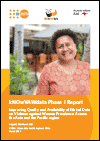
Resource | Publications,
Violence against women is recognized as a global public policy priority. Yet, despite growing awareness of the causes and consequences of violence against women, limited high-quality, actionable data on its prevalence exist. This gap is largely due to countries’ inadequate technical capacities to measure violence against women prevalence, meaning they rely on international experts, of whom there are not enough to meet the current and growing needs.
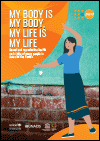
Resource | Publications,
This review provides an update to the 2015 report highlighting the current status of young people’s sexual and reproductive health and rights (SRHR) and examines key SRHR priorities in Asia and the Pacific to support informed policy, programming and advocacy.
This review has a particular focus on current evidence, policy and programme approaches related to key SRHR priorities in the region: child marriage and early union; adolescent pregnancy; young people with diverse sexual orientation and gender identity; SRH in a digital age; comprehensive sexuality education; and universal health coverage for adolescent SRH.
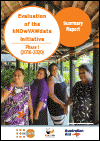
Resource | Publications,
Demand for data on the prevalence of violence against women (VAW) is increasing as countries monitor their progress towards meeting Sustainable Development Goal (SDG) 5 for Gender Equality and Women’s Empowerment and other commitments such as the Convention on the Elimination of All Forms of Discrimination against Women (CEDAW). Yet, due to limited technical capacities, data on VAW prevalence are often unavailable, underused or collected in unethical, unreliable, and incomparable ways.
To address this void in ethical, reliable, and comparable VAW prevalence data across Asia and the Pacific, the kNOwVAWdata Initiative was launched in 2016 by UNFPA Asia and the Pacific Regional Office (APRO) with financial support from the Australian Government Department of Foreign Affairs and Trade (DFAT). With University of Melbourne and Australia’s National Research Organisation for Women’s Safety (ANROWS) as key partners, the kNOwVAWdata Initiative aimed to improve the availability and quality of data to inform more effective policy and programme responses to end VAW.
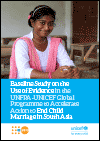
Resource | Publications,
This study was conducted in Bangladesh, India and Nepal at the start of Phase II (2020-2023) to establish a baseline measuring the programme’s use of evidence in programming, design and delivery, advocacy and monitoring and evaluation (M&E). The study also reviews the major activities outlined in the Phase II Work Plans for the three countries. The study develops a set of core indicators and tools for measuring the use of evidence that can be replicated at the mid-term and at the end of Phase II.
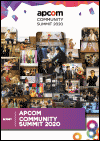
Resource | Publications,
Amidst the COVID-19 pandemic, the APCOM Community Summit 2020 brought together delegates, speakers, community members and participants from across the Asia-Pacific Region for the first-ever hybrid conference, convened using a combination of face-to-face and virtual conferencing. The impact of COVID-19 on people living with HIV and key populations, has been felt across the region, revealing glaring inequalities and amplifying the need for better co-ordination among the community. However, despite the challenges of the past year, the community response to the pandemic has been inspirational, demonstrating the vital role of community-based organizations as lifelines for people living with HIV and key populations, as well as the wider community.

Conversion Therapy Practices against Transgender Persons in India, Indonesia, Malaysia and Sri Lanka
Resource | Publications,
The Asia Pacific Transgender Network (APTN), together with its country partners, embarked on an ambitious and much-needed research project to study the various forms of conversion therapy practices being implemented against transgender (trans) and gender diverse people in India, Indonesia, Malaysia, and Sri Lanka. This evidence-generating project aimed to explore how trans and gender diverse people in these countries have been subjected to conversion therapy practices by documenting their personal narratives and lived experiences. Further, it sought to investigate how the existing national legal, policy, and programmatic frameworks create an environment in which these harmful practices can thrive.
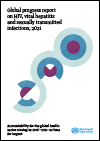
Resource | Publications,
This report provides accountability for the 3 Global Health Sector Strategies (2016-2021) on HIV, Viral Hepatitis and the STIs. The report assesses the impact, progress and gaps, and identifies actions to improve impact. The report also provides new data to assess the achievement of the SDGs targets and gaps towards the Thirteenth General Programme of Work (GPW 13) targets and a decade towards elimination.
The report describes WHO’s important contributions at regional and global level and identifies common actions across the 3 disease areas as well as gaps and priorities as a baseline for the next strategies.
More specifically, the report reviews progress in the health sector response along each of the strategy’s strategic directions, and in each WHO region, and discusses the opportunities for overcoming the remaining challenges to achieve universal access to effective HIV/STI/Hepatitis interventions and for contributing to the broader goal of universal health coverage.
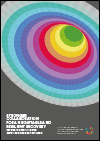
Resource | Publications,
This second, annual Global Action Plan for Healthy Lives and Well-being for All (SDG3 GAP) progress report illustrates how the SDG3 GAP is providing an important, long-term improvement platform for collaboration among 13 agencies in the multilateral system as they support countries on the path towards an equitable and resilient recovery from the COVID-19 pandemic and further progress towards the health-related SDGs.
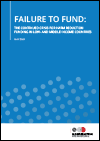
Failure To Fund: The Continued Crisis for Harm Reduction Funding in Low- and Middle-income Countries
Resource | Publications,
This report explores the state of harm reduction funding in low- and middle-income countries, drawing upon existing public data on domestic funding and information collected from international harm reduction donors. The data shows that we are further away from meeting the needs of people who use drugs than ever before.
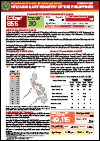
Resource | Fact Sheets,
In February 2021, there were 855 confirmed HIV-positive individuals reported to the HIV/AIDS & ART Registry of the Philippines (HARP) and were accounted to the total (84,610) reported cases since January 1984. Moreover, 17% (147) had clinical manifestations of advanced HIV infection at the time of testing.
Ninety-four percent (804) of the reported cases were male. Of the total male cases, 2% (19) reported their self-identity as female (transgender women) at the time of testing.





